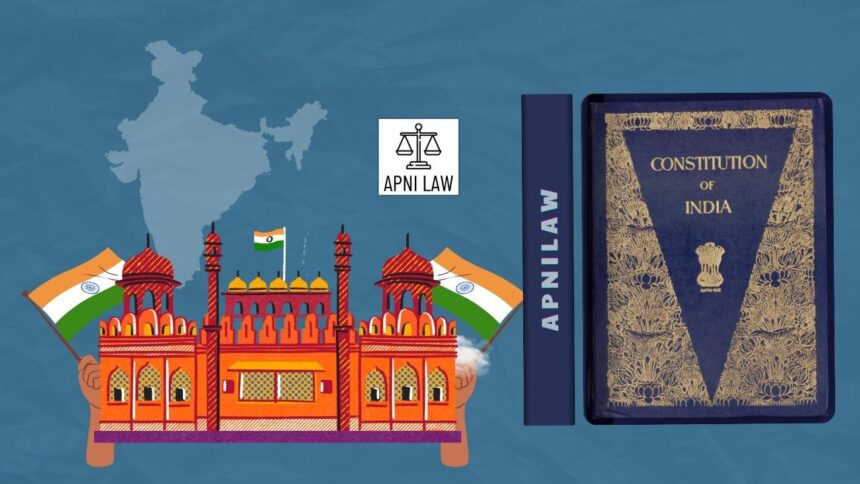Introduction
India’s foreign policy has evolved remarkably since independence, adapting to global changes while remaining true to its core values. From the days of Jawaharlal Nehru’s non-alignment approach to the present-day Act East Policy, India’s diplomacy reflects a balance between moral principles and strategic interests. The journey shows how a newly independent nation transformed itself into an influential global player, capable of shaping regional and international affairs.
India’s foreign policy is guided by the principles of sovereignty, mutual respect, and peaceful coexistence. It has continuously responded to shifts in global power structures, regional challenges, and economic imperatives. The transition from non-alignment to engagement-oriented policies like Look East and Act East demonstrates India’s growing confidence and pragmatism in world politics.
Foundations of India’s Foreign Policy
India’s foreign policy emerged from the ideals of freedom, peace, and equality that shaped its struggle for independence. The Constitution itself provides the philosophical basis for external relations through the Directive Principles of State Policy, which advocate respect for international law and peaceful resolution of disputes.
Jawaharlal Nehru, as the first Prime Minister, became the architect of India’s early foreign policy. He envisioned a world free from colonialism, power politics, and military alliances. Instead of aligning with either the United States or the Soviet Union during the Cold War, India chose the path of non-alignment—a policy that reflected both idealism and realism.
Non-Alignment Policy: India’s Moral Leadership
The Non-Aligned Movement (NAM) became the cornerstone of India’s post-independence foreign policy. Introduced formally at the Bandung Conference in 1955, it was based on the principle that newly independent nations should not become tools of superpower rivalry. India’s approach aimed to preserve strategic autonomy while supporting global peace and cooperation.
Under Nehru’s leadership, India played a key role in organizing the first NAM Summit in Belgrade in 1961, along with leaders like Josip Broz Tito of Yugoslavia and Gamal Abdel Nasser of Egypt. The movement allowed India to voice the concerns of developing nations, promote disarmament, and stand for anti-colonial struggles in Asia and Africa.
However, the policy faced criticism for being more moralistic than strategic. During conflicts such as the 1962 war with China and the 1971 Bangladesh Liberation War, India’s non-alignment was tested. Yet, it provided India the diplomatic space to maintain independence in its foreign relations and emerge as a voice for the Global South.
Shift Towards Realism: Post-1971 Developments
The 1971 Indo-Soviet Treaty of Peace, Friendship and Cooperation marked a turning point. India realized that strategic partnerships were necessary to safeguard national interests. While the treaty was not a formal alliance, it demonstrated a pragmatic shift from idealistic non-alignment to realistic diplomacy.
After the Bangladesh Liberation War, India emerged as a regional power. Under Indira Gandhi and later Rajiv Gandhi, India began to balance moral principles with hard-nosed realism. The country engaged more actively with global institutions and diversified its relationships beyond the superpowers.
Economic liberalization in the 1990s further changed India’s foreign policy priorities. The focus shifted from political solidarity to economic cooperation. India sought foreign investment, technological partnerships, and regional integration. The liberalization era laid the foundation for the Look East Policy, which became a new chapter in India’s external engagement.
Look East Policy: Turning Towards Asia
Introduced in 1991 by Prime Minister P.V. Narasimha Rao, the Look East Policy aimed to strengthen economic and strategic ties with Southeast Asian nations. The end of the Cold War had reshaped global power equations, and India needed new partners to ensure economic growth and regional influence.
This policy focused on building connections with the Association of Southeast Asian Nations (ASEAN) and fostering trade, investment, and cultural exchanges. India signed several cooperation agreements with ASEAN countries, participated in regional forums like the East Asia Summit, and enhanced connectivity projects through infrastructure and maritime routes.
The Look East Policy also had a strategic dimension. India sought to counterbalance China’s growing influence in Asia by building partnerships with countries such as Vietnam, Singapore, and Indonesia. This approach demonstrated India’s willingness to move beyond passive diplomacy and assert its presence in the Indo-Pacific region.
Act East Policy: A Strategic Upgrade
In 2014, the Look East Policy evolved into the Act East Policy under Prime Minister Narendra Modi. This transformation signaled a shift from mere economic engagement to proactive strategic involvement in East and Southeast Asia. The policy emphasizes stronger defense cooperation, people-to-people contact, and connectivity through land and sea routes.
The Act East Policy aligns with India’s vision of the Indo-Pacific—a region extending from the eastern coast of Africa to the western Pacific Ocean. India’s partnerships with Japan, Australia, and the United States through the Quad (Quadrilateral Security Dialogue) highlight its commitment to a free, open, and rules-based maritime order.
Furthermore, India’s engagement with ASEAN has deepened through agreements such as the ASEAN-India Free Trade Agreement. Infrastructure projects like the India-Myanmar-Thailand Trilateral Highway aim to improve regional connectivity, while cultural diplomacy reinforces shared civilizational ties rooted in Buddhism and trade heritage.
Core Principles of India’s Modern Foreign Policy
Despite changing global dynamics, certain constants define India’s approach to the world. The country continues to uphold sovereignty, equality, and peaceful coexistence as guiding principles. However, India now integrates these ideals with strategic and economic pragmatism.
India’s foreign policy today emphasizes multiple partnerships rather than exclusive alliances. The nation maintains strong relations with the United States, deep defense ties with Russia, growing cooperation with Japan and France, and stable relations with neighbors through initiatives like Neighborhood First and SAGAR (Security and Growth for All in the Region).
Challenges in India’s Foreign Policy
India’s expanding global role brings new challenges. Balancing relations between the U.S. and Russia, managing border tensions with China, and handling instability in South Asia require careful diplomacy. Domestic issues such as economic inequality and energy dependence also influence foreign policy decisions.
Climate change and global trade inequalities are emerging areas where India seeks to assert leadership. The country advocates for a just global order that accommodates developing nations’ needs. At the same time, India’s humanitarian aid, peacekeeping missions, and vaccine diplomacy have enhanced its global reputation.
India’s Soft Power and Global Image
India’s foreign policy also relies on soft power its cultural, spiritual, and democratic appeal. Through yoga, cinema, literature, and its diaspora, India has built goodwill worldwide. The Indian Technical and Economic Cooperation (ITEC) program and humanitarian assistance initiatives reflect India’s commitment to global welfare.
By combining moral influence with strategic capacity, India has transitioned from being a follower to a leader in global governance. Its role in forums like the G20, BRICS, and SCO underscores its growing significance in shaping international policies.
FAQs
1. What is the main difference between the Look East and Act East Policies?
The Look East Policy focused mainly on economic cooperation with Southeast Asian countries, while the Act East Policy adds strategic and security dimensions, emphasizing deeper engagement across the Indo-Pacific.
2. Why was non-alignment important for India’s foreign policy?
Non-alignment allowed India to maintain independence during the Cold War, avoiding alignment with superpower blocs while supporting peace and decolonization worldwide.
3. What are the major goals of India’s Act East Policy?
The Act East Policy aims to enhance connectivity, boost trade, strengthen defense partnerships, and promote cultural exchanges with ASEAN and East Asian countries.
Conclusion
India’s foreign policy journey from Non-Alignment to Act East, illustrates how the nation has evolved with changing global realities. From moral leadership under Nehru to strategic assertiveness in the Indo-Pacific, India’s diplomacy has grown stronger and more adaptable.
The shift signifies India’s confidence as a rising power that values both peace and pragmatism. The future of Indian foreign policy lies in balancing global cooperation with national interests while continuing to uphold the principles of democracy, equality, and mutual respect. In essence, India’s external relations tell the story of a nation that has learned to act globally while staying rooted in its timeless ideals of peace and coexistence.
For any specific query call at +91 – 8569843472








